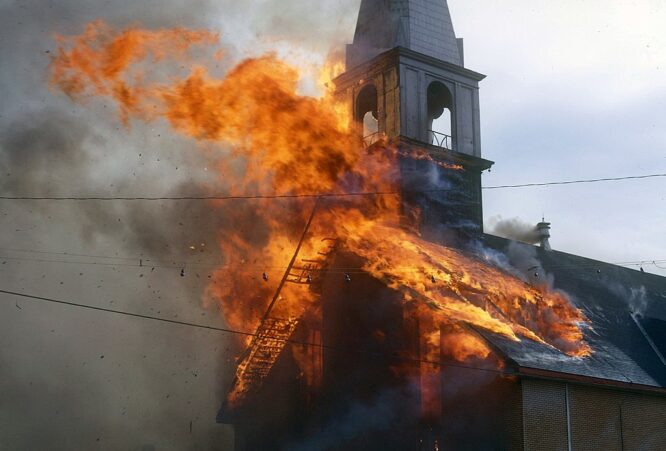What is the current state of religious freedom in the world? The latest report from the prestigious Pew Research Centre finds, not good. The report, issued last month, covers 2022, and finds that curbs on religious practices and beliefs remained at high levels worldwide.
The study, which assesses government-imposed restrictions and societal hostilities towards religion across 198 countries and territories, found that restrictions remain widespread, with notable regional and national variations.
The study uses measures called the ‘Government Restrictions Index ‘(GRI) and the ‘Social Hostilities Index’ (SHI) to quantify restrictions. The GRI examines twenty forms of government action, such as banning religious groups or restricting preaching, while the SHI assesses thirteen indicators of societal hostility, including religious conflict and harassment, for example, when a mob attacks a church. The research draws on sources such as the US State Department’s annual religious freedom reports and other data from the Council of Europe and the United Nations.
The report showed no significant improvement from 2021. The GRI remained at 3.0 out of 10, its highest recorded level. Similarly, the SHI, which evaluates religion-related societal hostilities, held steady at 1.6. These may not sound high, because they are average figures, but there is huge variation by country. In China, for example, there are very extensive government restrictions on religion. In India, attacks by Hindu militants on Christians are commonplace.
Although the average global scores have not changed, the number of countries experiencing high or very high levels of government restrictions rose to 59 in 2022, up from 55 the previous year. This marks the highest figure since the study began in 2007.
The report found harassment of religious groups by governments or groups in society in 192 of the 198 countries surveyed.
This represents a record high, surpassing the 190 countries reported in 2021. Government harassment occurred in 186 countries, an increase from 183 in the prior year, while societal harassment affected 164 countries, a consistent figure from 2021.
Physical harassment, including assaults, property damage, and displacement, also rose. Incidents were reported in 145 countries, up from 137 the previous year. Both government actors and private individuals were equally likely to engage in such harassment, with incidents involving either group occurring in 111 countries.
The Middle East and North Africa remained the regions with the highest levels of government restrictions, with their median GRI score rising from 5.9 to 6.1. While the Americas reported the lowest levels, with a median GRI score falling from 2.1 to 1.8. Europe also saw a slight decrease, with its score dropping from 3.1 to 2.9.
Mind you, the score for Europe of almost 3 (the world average for government restrictions on religious freedom) throws up certain questions about the methodology. It makes it appear that Europe is quite a bad place for religious freedom in global terms, which is clearly not the case in general terms, unless having an Established Church, as in say, Britain, Greece or Norway, counts as something bad. Moreover, severe Government restrictions on religious freedom in places like Russia and Ukraine does drag up the score.
There is also growing societal hostility in some European countries towards certain religious groups, not least Jews. But in France (say), Christian churches are sometimes attacked.
Among the world’s 25 most populous nations, notable trends include China’s “very high” levels of government restrictions paired with “low” social hostilities. Vietnam and Turkey exhibited “very high” government restrictions and “moderate” levels of societal hostility.
While global averages remain steady, the record number of countries with severe government restrictions underscores the persistent challenges facing religious freedom worldwide. The steady rise in harassment, both by governments and groups, signals the need for continued vigilance and advocacy.
Regional disparities highlight the varying dynamics of religious restrictions. As the Middle East-North Africa region continues to experience the highest levels of government restrictions, countries like the United States and Canada maintain relatively low levels. However, global stability in these indices shows no significant progress.
This annual report offers a reminder of the ongoing struggles faced by religious communities globally and the critical need for international cooperation to uphold the principles of religious freedom.
















